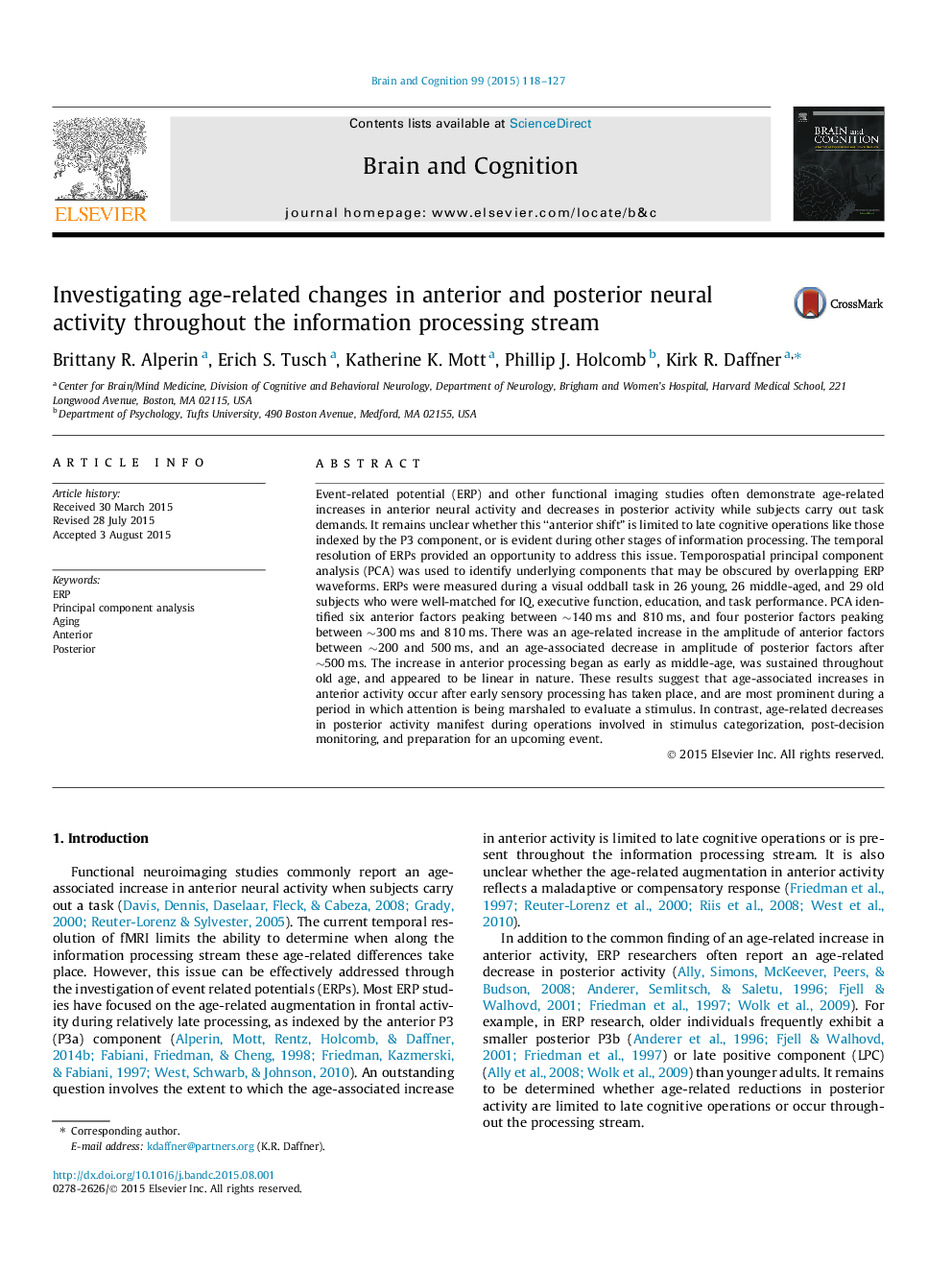| Article ID | Journal | Published Year | Pages | File Type |
|---|---|---|---|---|
| 923954 | Brain and Cognition | 2015 | 10 Pages |
•Age-related increased anterior and decreased posterior neural activity commonly found.•When along the information processing stream does this “anterior shift” occur?•PCA of ERP data was used to identify anterior and posterior factors.•Age-related increased anterior activity occurs when attention is being marshalled.•Age-related decreased posterior activity occurs during decision-making and updating.
Event-related potential (ERP) and other functional imaging studies often demonstrate age-related increases in anterior neural activity and decreases in posterior activity while subjects carry out task demands. It remains unclear whether this “anterior shift” is limited to late cognitive operations like those indexed by the P3 component, or is evident during other stages of information processing. The temporal resolution of ERPs provided an opportunity to address this issue. Temporospatial principal component analysis (PCA) was used to identify underlying components that may be obscured by overlapping ERP waveforms. ERPs were measured during a visual oddball task in 26 young, 26 middle-aged, and 29 old subjects who were well-matched for IQ, executive function, education, and task performance. PCA identified six anterior factors peaking between ∼140 ms and 810 ms, and four posterior factors peaking between ∼300 ms and 810 ms. There was an age-related increase in the amplitude of anterior factors between ∼200 and 500 ms, and an age-associated decrease in amplitude of posterior factors after ∼500 ms. The increase in anterior processing began as early as middle-age, was sustained throughout old age, and appeared to be linear in nature. These results suggest that age-associated increases in anterior activity occur after early sensory processing has taken place, and are most prominent during a period in which attention is being marshaled to evaluate a stimulus. In contrast, age-related decreases in posterior activity manifest during operations involved in stimulus categorization, post-decision monitoring, and preparation for an upcoming event.
